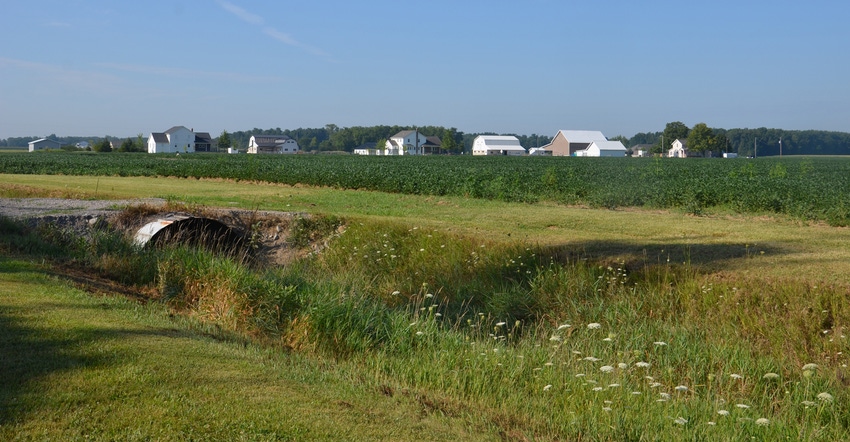
You want to spray dicamba herbicide on your dicamba-tolerant soybean field. The wind is blowing at 7 miles per hour toward a neighbor’s field of soybeans that are not dicamba-tolerant. Can you spray your entire field? Can you spray any of the field? Could you spray later if the wind changes directions?
This is just one of several scenarios that will likely play out this spring and summer if you’re raising dicamba-tolerant soybeans and intend to spray one of the new dicamba products.
“The labels are very specific about what you can and can’t do related to spraying dicamba around sensitive crops,” says Bill Johnson, Purdue University Extension weed control specialist. “EPA emphasized protecting sensitive crops when they tightened up the labels for 2018.”
Possible scenarios
Here are four possible scenarios, beginning with the one described above.
1. With wind blowing 7 mph toward non-dicamba-tolerant soybeans, can you spray?
“No, not even if you leave a buffer,” Johnson says. “The labels are very clear that if the wind is blowing toward a sensitive crop, you can’t spray at that time.”
Suppose you’re spraying a very large field. You don’t spray the half closest to the sensitive crop because the wind is blowing toward it. If the wind changes direction later and blows away from the sensitive crop, then you can spray.
However, when you come back to finish spraying the field, you must treat it as a new application for recordkeeping purposes, Johnson says.
2. Suppose your neighbor has dicamba-tolerant beans next to your field. Can you use that as a buffer?
Yes, you can count your neighbor’s field as a buffer if there isn’t a grassy ditch or similar area between the two fields, Johnson says. That requires visiting with your neighbor in advance and learning what he or she has planted where. It’s your responsibility to know where sensitive crops are planted, and to take the appropriate precautions spelled out on the dicamba labels.
3. Your neighbor has dicamba-tolerant soybeans growing, but there is a grassy ditch between the two fields. Can you still use the neighbor’s field as your buffer for spraying?
“No, not if there is a grassy ditch,” Johnson says. “According to the label, the ditch means that you would have to take the buffer out of your field, no matter what your neighbor plants in the field across the ditch. You have to leave the appropriate buffer where you don’t spray dicamba — either 110 feet, in most cases, or 220 feet if you’re applying high rates of XtendiMax/FeXapan, beginning at the edge of your field.”
4. A county road with grassy side ditches separates two fields of dicamba-tolerant beans. Do you need a buffer to spray dicamba?
As the label reads, you would still need to leave a buffer, Johnson says. “In some western states where fields literally go almost up to the road, you might be able to include the road as buffer,” he adds. “In most places in Indiana, there are grassy side ditches along roads. You’re going to need to leave the appropriate amount of buffer out of the field you’re spraying to comply with the label.”
About the Author(s)
You May Also Like




